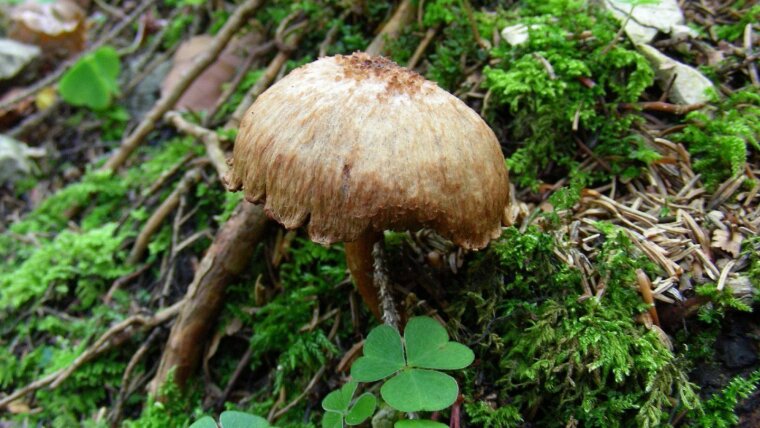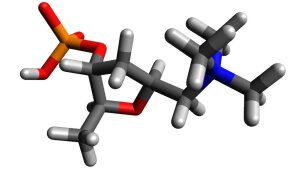
- Life
- Research
Published: | By: Maria Schulz
Chemical structure of 4'-phosphomuscarin where carbon is shown in black, hydrogen in white, oxygen in red, nitrogen in blue and phosphorus in orange.
Graphic: Sebastian DörnerMushrooms are existing in a breathtaking variety of shapes, colors and sizes. Especially in autumn, mushroom hunters are going into the forests to find the tastiest of them, prepare them in multiple ways and eat them with relish. However, it is well known that there are also poisonous mushrooms among them, and it is live saving to distinguish between them. But are these mushrooms really poisonous?
Researchers at Friedrich Schiller University Jena and the Leibniz Institute for Natural Product Research and Infection Biology – Hans Knöll Institute (Leibniz-HKI) have investigated this question and recently published the results of a study about muscarine. This toxin is found in various mushrooms, the best known of which is the fly agaric mushroom (Amanita muscaria), which also gave the toxin its name. However, considerably higher concentrations of muscarine are found in fiber cap mushrooms and fool’s funnel mushrooms. A team led by Dirk Hoffmeister, Professor at the Institute of Pharmacy at the University of Jena and associated with his group to the Leibniz-HKI, has now been able to show that muscarine is not only present in mushrooms as such, but it can also be stored as a harmless precursor and only be released when mushrooms got injured.
Hidden poisons
Muscarine was discovered 150 years ago as the first fungal toxin. The current study was able to prove that it is stored, for example, in the fool’s funnel mushroom (Clitocybe rivulosa) as 4'-phosphomuscarin, which is less toxic. “There are indications that other substances are also present, because pure muscarine apparently has a different effect than a mushroom containing muscarine,” says Sebastian Dörner, doctoral researcher in Hoffmeister’s team. The fool’s funnel mushroom is also known as the false champignon and can easily be confused with the real champignon. Only when the mushroom is damaged by cutting, cooking or digestion, an enzyme releases the poisonous muscarine from this precursor molecule. In other mushrooms, however, muscarine is already present in its active form. It is not uncommon for organisms to show defense and protective reactions when they are damaged – for example by being eaten by animals.
The mixture of free active and “hidden” inactive muscarine, which only becomes active poison when eaten, increases the danger of certain types of mushrooms such as the funnel mushrooms.
Potentially important findings for emergency medicine
The research results have now been published in the renowned journal "Angewandte Chemie International Edition". They could help doctors and toxicologists to better assess the actual danger of certain types of fungi and treat poisoning more efficiently.
Muscarine interferes with the transmission of signals by the neurotransmitter acetylcholine and leads to permanent excitation. The consequences are increased salivation and lacrimation, sweating, vomiting, diarrhea, circulatory collapse and even fatal cardiac paralysis. It is irrelevant whether the poison has already been ingested in free form or as a precursor that is only activated in the body. The correct identification of edible mushrooms is therefore still an important prerequisite for an enjoyable and carefree mushroom meal.
The work was carried out in cooperation between Dirk Hoffmeister's team and the group led by Christian Hertweck, department head at the Leibniz-HKI and also a professor at the University of Jena. The study was funded by the German Research Foundation as part of the Collaborative Research Center "ChemBioSys".
Original publication:
Dörner S, Trottmann F, Jordan PM, Rogge K, Bartels B, Werz O, Hertweck C,Hoffmeister D (2024): The fatal mushroom neurotoxin muscarine is releasedfrom a harmless phosphorylated precursor upon cellular injuryExternal link. Angewandte Chemie International Edition.
